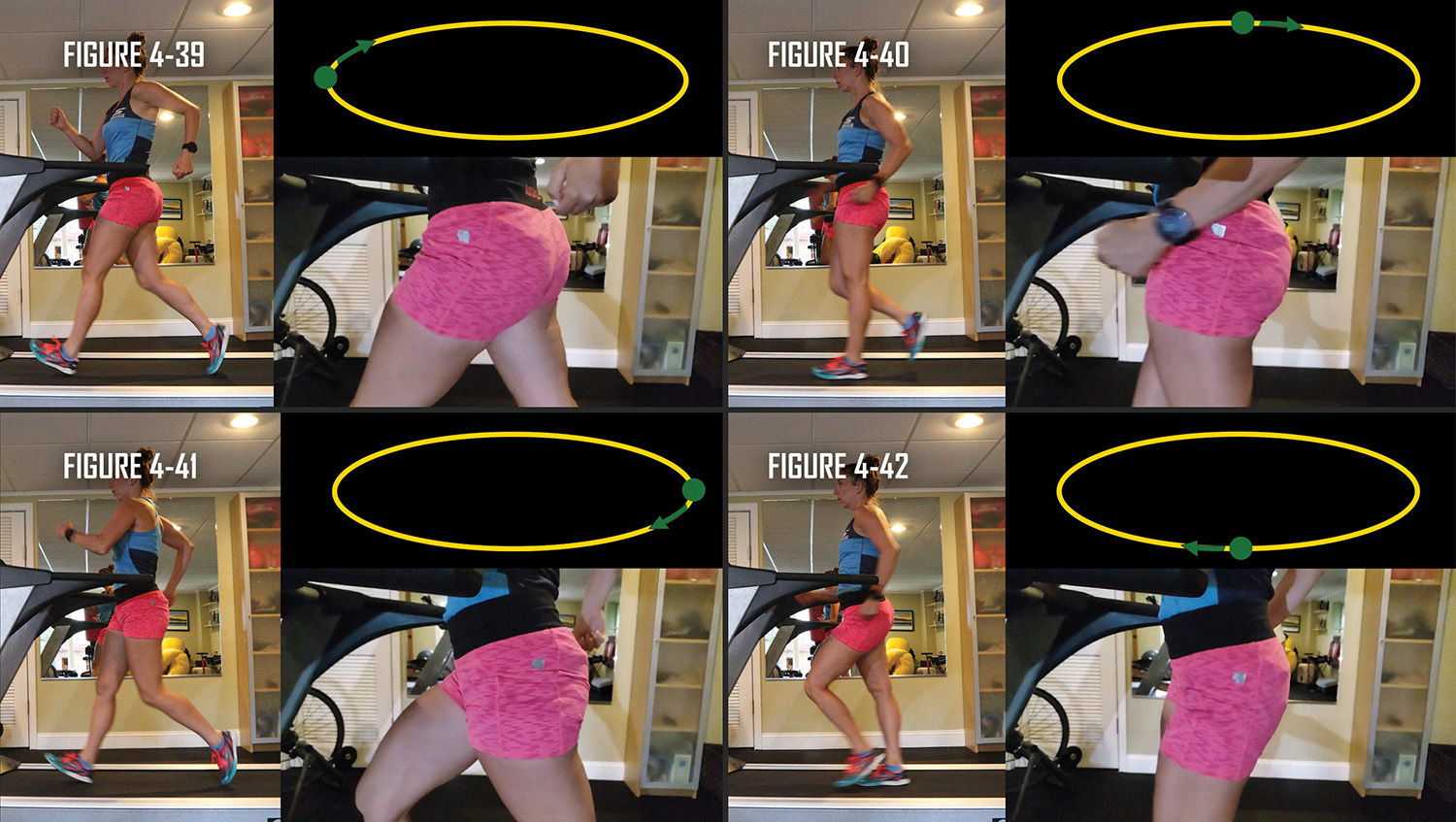It's All About the Hips - Part 2
To further understand the motion of the hips, let’s observe the center point of the left hip of a race walker’s stride as viewed from the side while the race walker is on a treadmill.
The walker’s heel strikes the ground as the center point of the hip is in the neutral position (Figure 4-39).
As the treadmill carries the straightened leg backward, the center point of the hip rises (Figure 4-40). In our illustration, the center point moves clockwise.
From the moment the straightened leg passes under the body until the right foot’s toe pushes off the treadmill, the center point of the hip moves down (Figure 4-41). As the rear foot begins to move forward, the leg must be bent. While it does, the hip continues to lower. This is known as “hip drop.”
After the knee of the swing leg passes under the body, the center point of the hip rises to its starting position for heel strike (Figure 4-42).

As the walker’s left foot is about to leave the ground with the left hip behind the body, the left hip begins moving forward (Figure 4-43). As it does, it arcs out slightly (Figure 4-44).
Once the knee swings under the body, the hip continues forward while arcing inward back to the starting position (Figure 4-45).
The process is repeated when the right leg swings forward and the right hip arches outward and then backward to the neutral position.
Even after a technical explanation many beginning walkers still do not know what it should feel like to race walk with proper hip motion. When Tim and I teach race walking clinics we resort to analogies to try to get walkers to engage their hips.

Next Lesson: Hips Drills to Increase Hip Rotation for Race Walking
Quick Link: Race Walking Arm Motion
Quick Link: Overall Stride